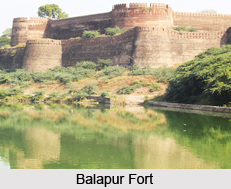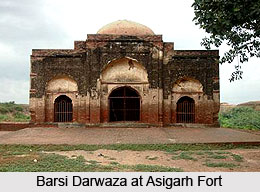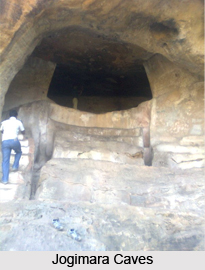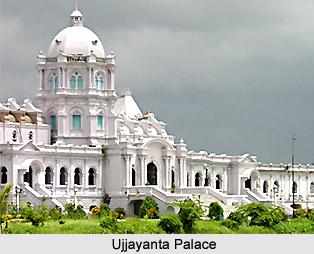 Monuments in North-east India comprise a large number of attractions in the states of Meghalaya, Assam, Arunachal Pradesh, Tripura, Sikkim, Manipur, Mizoram and Nagaland. These north-eastern states are known for their natural beauty and several tourist attractions which can be compared with the imagination of a poet. Nested in the eastern parts of the great Himalayas, this region in India is overflowing with the bounty of nature- Flora and Fauna, the wildlife, and the region`s colourful people. India`s north-eastern monuments include several palaces, temples, of which some are on a ruined state. Some of the north-eastern states in India also possess churches and cathedrals. One can also find mosques somewhere in these states.
Monuments in North-east India comprise a large number of attractions in the states of Meghalaya, Assam, Arunachal Pradesh, Tripura, Sikkim, Manipur, Mizoram and Nagaland. These north-eastern states are known for their natural beauty and several tourist attractions which can be compared with the imagination of a poet. Nested in the eastern parts of the great Himalayas, this region in India is overflowing with the bounty of nature- Flora and Fauna, the wildlife, and the region`s colourful people. India`s north-eastern monuments include several palaces, temples, of which some are on a ruined state. Some of the north-eastern states in India also possess churches and cathedrals. One can also find mosques somewhere in these states.
Monuments in Tripura
Tripura, a state in the north-eastern India with Agartala as its capital has been the residence of the local Rajas until 1844. The Ujjayanta Palace, which belongs to the earlier period of the twentieth century, was designed by Sir Alexander Martin and Sir R. N. Mukherji in a mixed European and Mughal style after the old palace was damaged by an earthquake. Among other prominent monuments of Tripura, the most notable one is the Mata Bari Temple. It is a well-known temple which is regarded as one of the most sacred places in the state. Mata Bari`s idol is situated inside the temple and people worship with lots of pomp and glory.
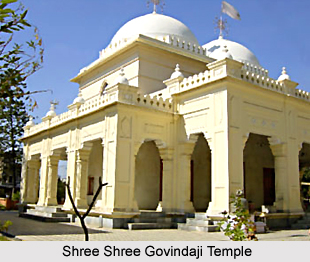 Manipur is another state of this region which also possesses some of the ancient historical monuments. Imphal is the capital city of this Indian state. It lies in a beautiful valley, over sixty miles long, at a height of about 2,600 ft above the level of sea. There is a large war cemetery managed by the Commonwealth War Graves Commission. The most prominent and notable sites with regard to its archaeological and historical importance in Manipur is the site of the old palace and fortress. Apart from these, some of the other major monuments include those in the Kangla Fort Complex. One of them is the Uttra, ancestral coronation hall belonging to the Manipur kings. The installation ceremony was organized at this place. The building holding the hall for coronation was destroyed due to air raids at the time of the Second World War. The flight of stairs and the remains of the foundation are there. Various other Monuments & Archaeological sites in the Kangla Fort Complex are; Ruins of the Citadel, Bheithob, Temple of Shree Shree Govindaji, Temple of Brindabanchandra, Site of Rasmandal, Nunggoibi, Manglen, Site of the two Kangla Shas (mythical beasts) and Nungjeng Pukhri.
Manipur is another state of this region which also possesses some of the ancient historical monuments. Imphal is the capital city of this Indian state. It lies in a beautiful valley, over sixty miles long, at a height of about 2,600 ft above the level of sea. There is a large war cemetery managed by the Commonwealth War Graves Commission. The most prominent and notable sites with regard to its archaeological and historical importance in Manipur is the site of the old palace and fortress. Apart from these, some of the other major monuments include those in the Kangla Fort Complex. One of them is the Uttra, ancestral coronation hall belonging to the Manipur kings. The installation ceremony was organized at this place. The building holding the hall for coronation was destroyed due to air raids at the time of the Second World War. The flight of stairs and the remains of the foundation are there. Various other Monuments & Archaeological sites in the Kangla Fort Complex are; Ruins of the Citadel, Bheithob, Temple of Shree Shree Govindaji, Temple of Brindabanchandra, Site of Rasmandal, Nunggoibi, Manglen, Site of the two Kangla Shas (mythical beasts) and Nungjeng Pukhri.
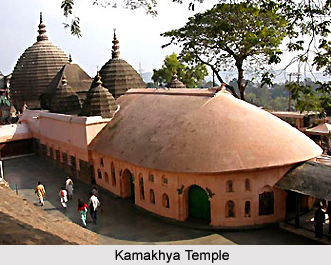
Monuments in Nagaland
The ruins of Kachari are located in Dimapur, the ancient Kachari capital. It is regarded as a notable site of megalithic culture. A majority of the ruins appear to be of the period of Kachari civilization. Dimapur in Nagaland holds ruins of reservoirs, temples and other monuments including the most notable are being their monolithic structures. The monoliths exhibit the detailed rituals of the cult of fertility. The elegantly designed entrances to these monuments are still in pristine condition. Blocks of brick and stone pieces with several designs that remain scattered, still reveal the artistry. Kohima is located at a height of 1,432 meters, at the apex of a saddle or a broad pass bordered by much higher mountains. There is also a fine war cemetery round the old District Commissioner`s bungalow, sweetly maintained by the Commonwealth War Graves Commission.
Monuments in Meghalaya
Shillong, a pleasant hill station, is now the capital of Meghalaya, a state created in the year 1971, as a home for the Khasia, Jantia and Garo tribal communities. The entire town was razed by an earthquake in the year 1897, so there are few buildings of any interest. Government House, close to Ward Lake, is worth a look. There are a church, a Welsh Presbyterian Mission, Roman Catholic College and Schools, as well as the Pasteur Institute. In Meghalaya, the State Museum is a store room where one is able to venture into the culture, traditions and history of the land. This museum is renowned for storing a collection of important items from various parts of Meghalaya. A number of other monuments of Meghalaya include Brookside, All Saints Cathedral, Ossuarium, Shillong Cathedral, Mawkhar Presbyterian, Martyr`s Column Statue of Jesus, Shillong Centenary Monument, etc.
Monuments in Sikkim
The small state of Sikkim in India accomplishes to attract large number of tourists due to its stupendous knolls which covers the entire topography, but the monuments and museums in Sikkim are left with so much splendor and beauty that a good amount of the visitors usually visit them while on a tour of Sikkim. Among the most prominent museums and monuments in Sikkim, the Dul Dul Chorten is notable. This famous monument is located in Gangtok. The full form of the name of this massive structure is Duldul Chortenat Dotapu Chorten and the foundation stone of this monument was laid down by Trulshi Rinpoche in 1945-46. Tasuklakhang is the Royal Chapel in Gangtok. It is situated inside the palace grounds, famously known as Tsulakhang Royal. This is considered to be the major place of assembly and worship and the repository of a huge collection of Buddhist scriptures. A massive portal divides the starkness of its famous fa‡ade, in each corner of the building, is a sculpture made of wood in relief, the impressive snow lion`s head.
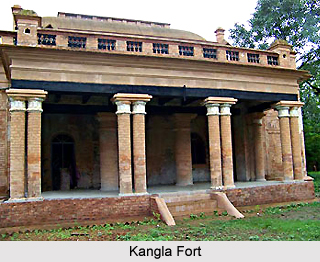
Monuments in Assam
The gateway to the north-eastern regions of India is considered to be the state of Assam. The Brahmaputra River flows through the state which is having its origin in Tibet. A significant portion of Assam is situated amidst the narrow valley created by the river over ages. Satras are generally monasteries in Assam which spread neo Vaishnavism. They also formed educational centres and dissemination of various kinds of art of smooth living. Satra culture developed chiefly at Majuli, Barpeta, Bardowa, Madhupur etc. In 19th century, when the British went into the Assam, missionaries followed and a number of churches were founded all over Assam. The state is a unique case of religious harmony and communal tolerance which is there within the believers of different faiths. Thus the society in Assam is free from communal conflict. The largest river island of the world is Majuli, which is also the seat of various Satras founded by Sankardeva, the Vaishnava revivalist. At the time of Rasotsava every year, a large number of devotees visit the holy Satras.
Barpeta Satra and Kirtanghar is the famous Shrine and Kirtanghar, which attracts the Vaishanavas from different parts of the world. It was set up by Madhadeva, Shankerdeva`s famous disciple. Kamakhya Temple is one of the most powerful Shakti temples in Assam. Here the Mother Goddess Kamakhya is worshipped. This temple is located on the summit of the beautiful Nilachal Hills overlooking the great Brahmaputra River. The famous shrine of tantric Shaktism is mentioned in the inscription of Samudragupta`s Allahabad pillar. Tourists and devotees from various parts of the country vsisit this holy place at the time of Manasha Puja and Ambubashi. The temple is located at a distance of about eight kilometers from Guwahati. Situated at a distance of about forty kilometers from Guwahati, Madan Kamdev is a mystery, an enigma and a marvel. The Poa-Mecca is a mosque constructed by Pir Giasuddin Aulia and it is assumed that the mosque bears one-forth of the sanctity of Mecca, a famous religious place of the Muslims, and therefore it are named so.
Monuments in Arunachal Pradesh
Arunachal Pradesh is presently known well in the Indian archaeological map. It is filled with archaeological findings in several ruins and monuments. The ruins of temples, forts, etc, date back to the earlier parts of the 10-16th centuries. Again, the 17th and 18th centuries witnessed the rise of the culture of Buddhism in the western portions of the region well testified by the gompas, standing monastery and stupas. Further, penetration of the administration of British in the hilly regions during the later period also invited some resistance from people of the locality against the British domination and expansion policies. These confrontations had resulted in the formation of canals, stockades, carved stones, walls etc to defend the territory from the invaders, which are regarded as symbols of famous events of the area. Some of the major monuments in Arunachal Pradesh include Jawaharlal Nehru Memorial Museum, Buddha Vihar, Ita Fort, etc.
Monuments in Mizoram
Mizoram is one of the states of north-eastern India is also considered to be the youngest Indian states. It became the country`s 23rd state on the 29th of February 1987. One of the prominent monuments of Mizoram is the Mizoram State Museum. This museum bears almost the entire historical glory of the state and thus is one of the notable places of interest in the state for the local people as well as the visitors from outside. The Soloman`s Cave is the heaven for several imported garments in Mizoram and the Bara Bazar is the major area for shopping in the city of Aizawl in Mizoram.


